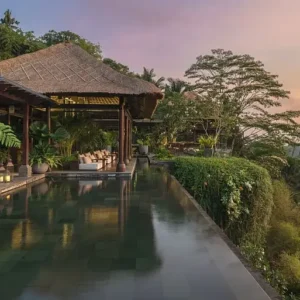Yangon, the largest city in Myanmar, is green and cool with lush tropical trees, shady parks, and beautiful lakes. As it rapidly develops it has also acquired traffic jams, poverty, and signs of international commerce. On first sight, it is a typical Asian city, but you quickly realize that it is less modern than its Asian peers and it has its own calm culture. Being the principle air and seaport, it is home to many of the country’s most important organizations. Let’s explore some best places to visit in Yangon
01. Botahtaung Pagoda
(Corner of Strand Road and Botahtaung Pagoda Road.)
This is a famous pagoda located in downtown Yangon near the Yangon River. The origins of the pagoda are not clear but we know that the structure was completely destroyed by a bomb in 1943 and what we see today is a reconstruction.
During the clean-up work, a golden casket and about 700 gold, silver and bronze statues were uncovered, as well as a number of terracotta tablets, one of which is inscribed both in Pali and in the south Indian Brahmi script. Part of the discovery is displayed in the pagoda, but the more valuable objects are locked away.
The bell-shaped stupa is hollow, and visitors can walk around the interior, which has a mirrored maze-like walkway lined with glass showcases, and many small alcoves for private meditation. The small lake outside is home to thousands of terrapin turtles, and if you feed them it is believed you will acquire merit for a future existence. The golden pagoda spire rises 40 meters. A covered bridge leads visitors to a shrine of a few resident nats (guardian spirits).
It is open from 6 a.m. to 8 p.m. daily with an admission charge for foreigners of $3. From here we walk west along the river.
02. Pansodan Jetty
The jetty is situated in front of the famous Strand Hotel on the Yangon River. It is a great place to watch people who come across the river from the other side of the city. You can cross the river by ferry boat, which leave regularly and take about 10 minutes for the journey. On board, there are vendors selling freshly sliced watermelon, cigarettes, tea, food, and various other things. The foreign price to travel is many multiples of the local price but still won’t break the bank. It’s inland now to the next point of interest.
03. St Mary’s Cathedral
(Bo Aung Kyaw Road)
This Catholic cathedral is the largest cathedral in Myanmar. Designed by Dutch architect Jos Cuypers, it has a red brick exterior, two spires, and a bell tower. The interior has some nice stained glass windows, however, most of the originals were destroyed during World War II. Masses are held at 6 a.m. and 8 a.m. on Sundays.
04. Independence Monument and Mahabandoola Garden
The garden is downtown, southeast of the Side Pagoda, and the Independence Monument is located inside the gardens. The obelisk, which has a height of 46 meters and which is surrounded by five 9 m pillars, was erected to commemorate Myanmar’s independence from Britain in 1948.
The park was originally established in 1867 as Fytche Square, had a name change in 1935 to Bandula Square and was renamed again after independence. Known for its rose gardens, the park provides good views of City Hall and other colonial buildings. People come to practice tai chi in the park early in the morning.
05. Immanuel Baptist Church
(Maha Bandula Park St.)
The church is on one side of the park It was founded in 1885 but destroyed during World War II; the present church was rebuilt in 1952. A Sunday service is held at 8.30 a.m.
06. Sule Pagoda
The Sule Pagoda is the shining stupa at the heart of the downtown area. The richly gilded monument rises from the middle of a busy intersection, surrounded on all sides by shops, swirling traffic and a growing number of high-rise hotels and office buildings.
Its origins are debated but it is believed to be been originally constructed by the Mons as it is a Mon-style chedi, about 46 m high. Except for the chedi itself, enlarged to its present size by Queen Shin SawTbu in the 15th century, nothing at the pagoda is more than a little over a century old.
The golden pagoda is unusual in that its octagonal shape continues right up to the bell and inverted bowl. Inside, the pagodas shrines and images include four colorful Buddhas with neon halos behind their heads. As with all stupas, visitors should walk around it in a clockwise direction.
As well as its religious significance, the Sule Pagoda has seen several famous political demonstrations over the past three decades. In 1988 the military opened fire on unarmed protesters, killing and injuring dozens and during the Saffron Revolution of 2007, the monument was the focal point of mass gatherings.
It opens daily from 4 a.m. to 10 p.m. and there is a $5 admission fee for foreigners. Now walk westwards to the next attraction.
07. Kheng Hock Keong Temple
(Corner of Sintodan Street and Strand Road)
This is the oldest Chinese Buddhist and Taoist temple in Yangon being founded in 1861. The temple is full of statues, flowers and other decorations in colorful red. In the early morning and evening, it is often thronged with worshippers offering candles, flowers, and incense.





